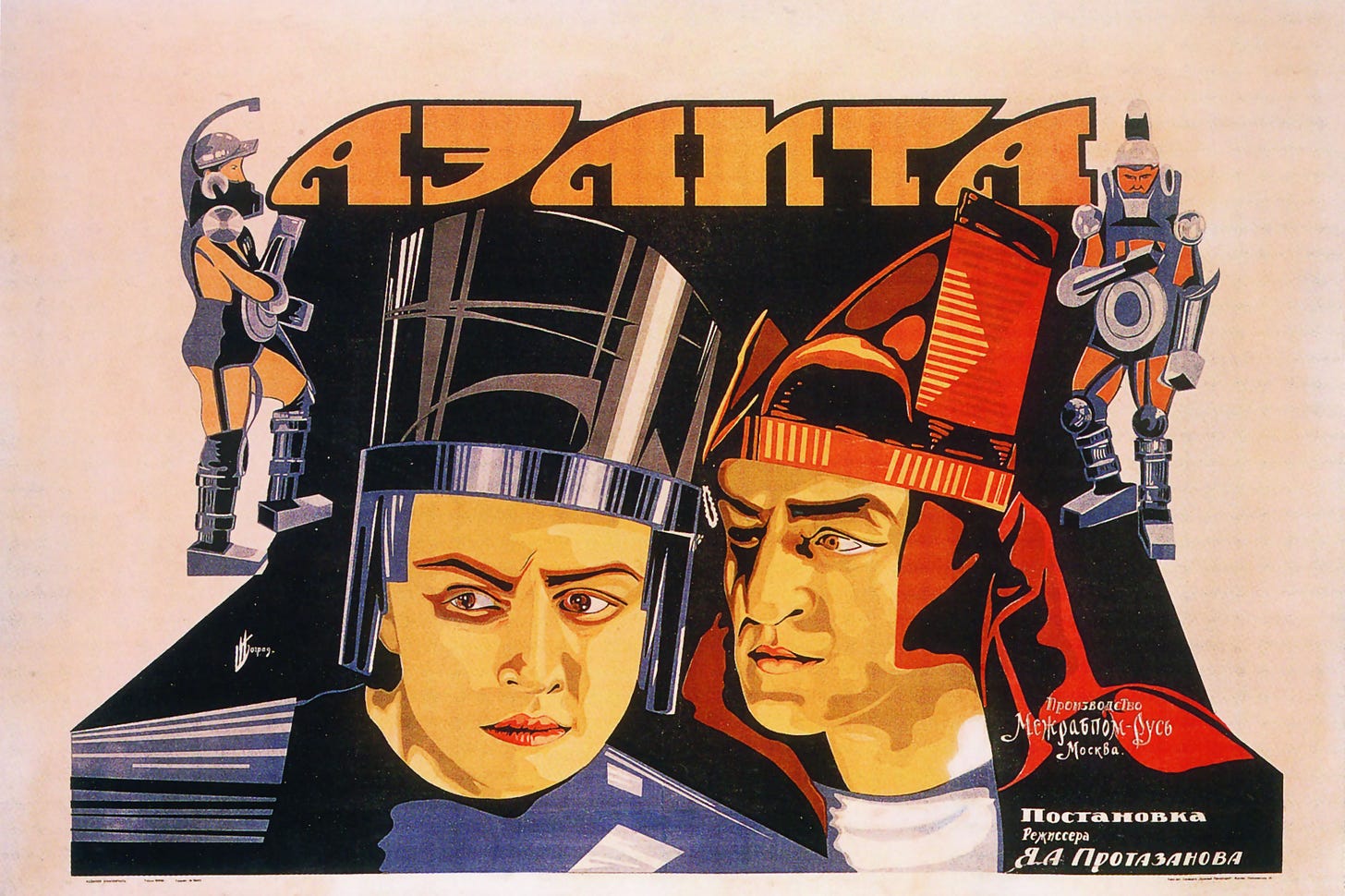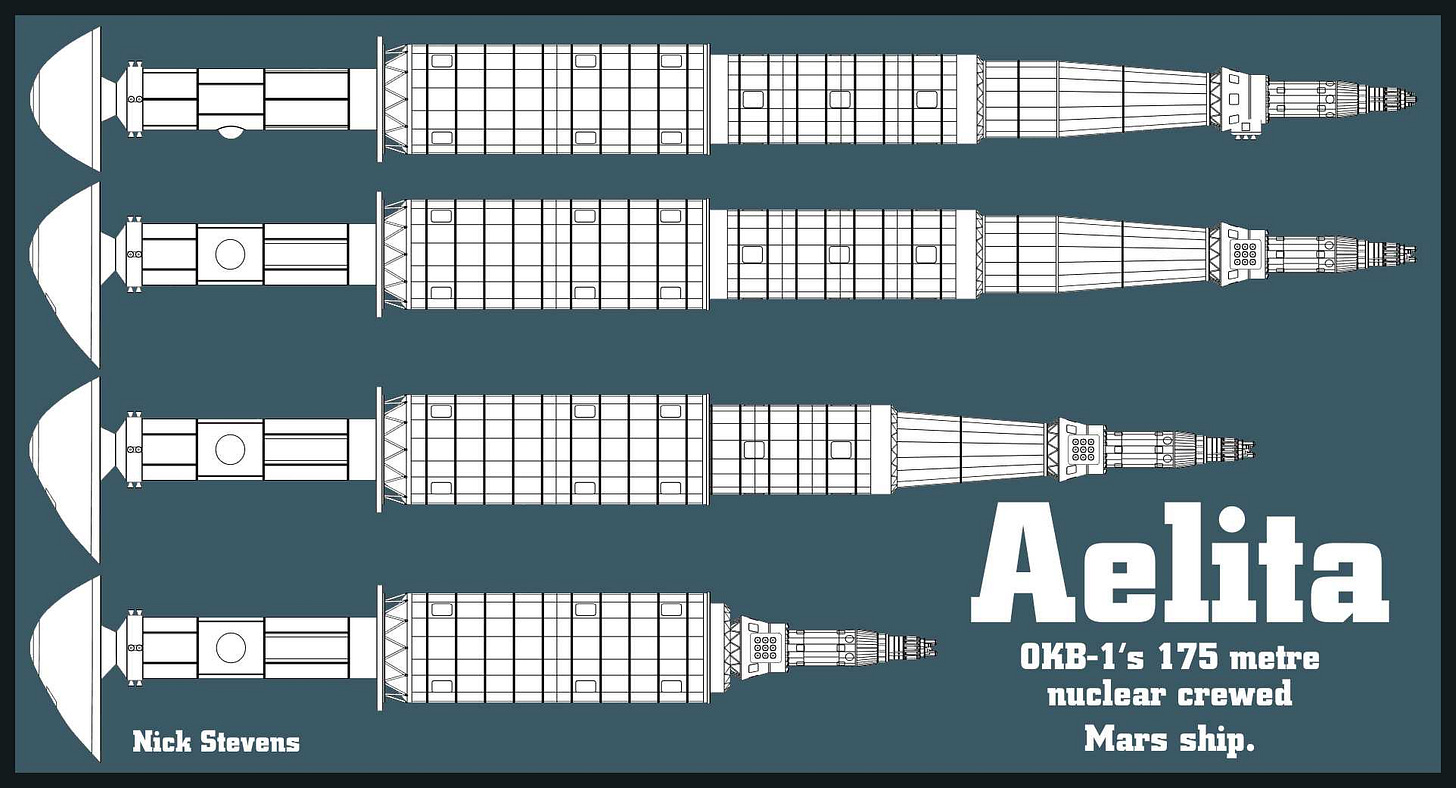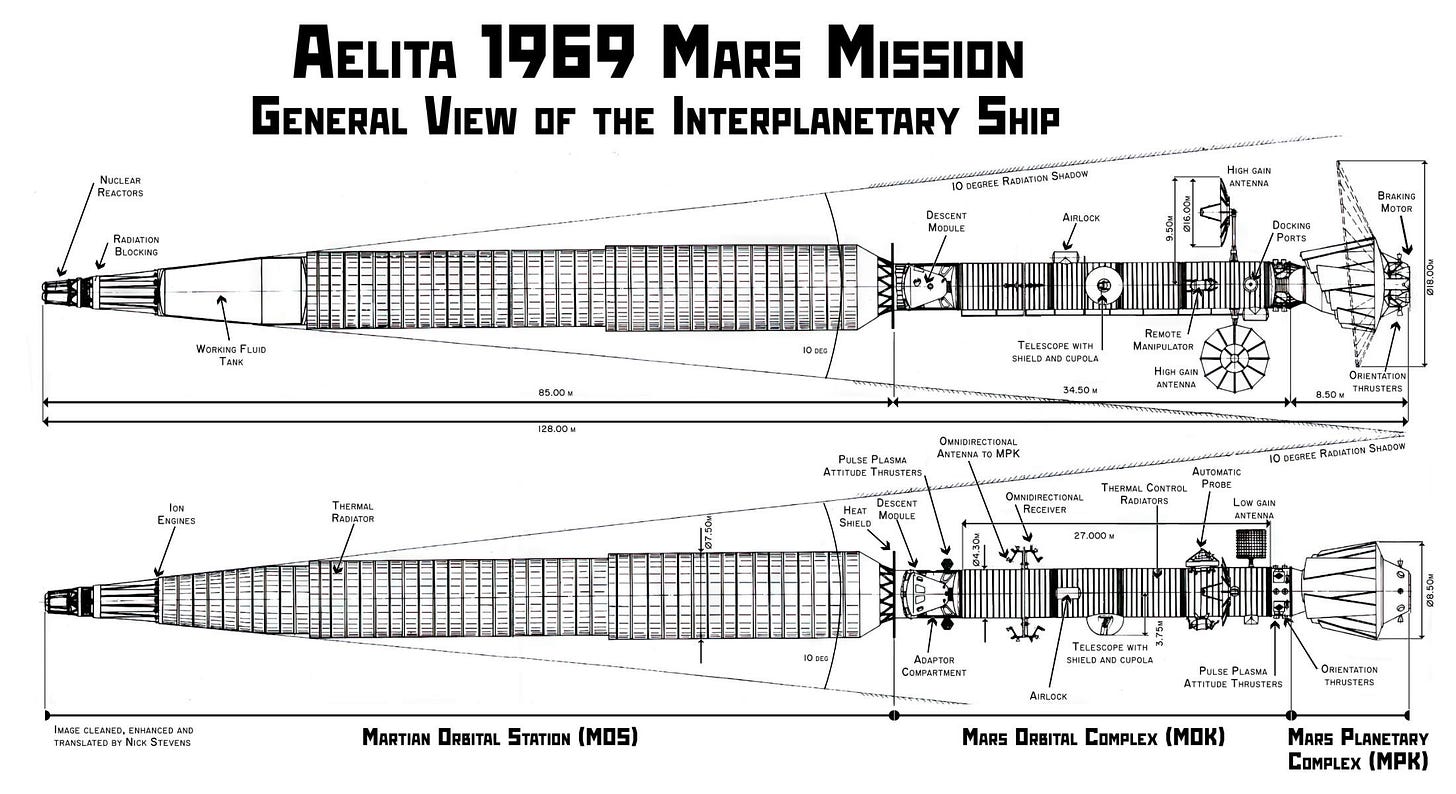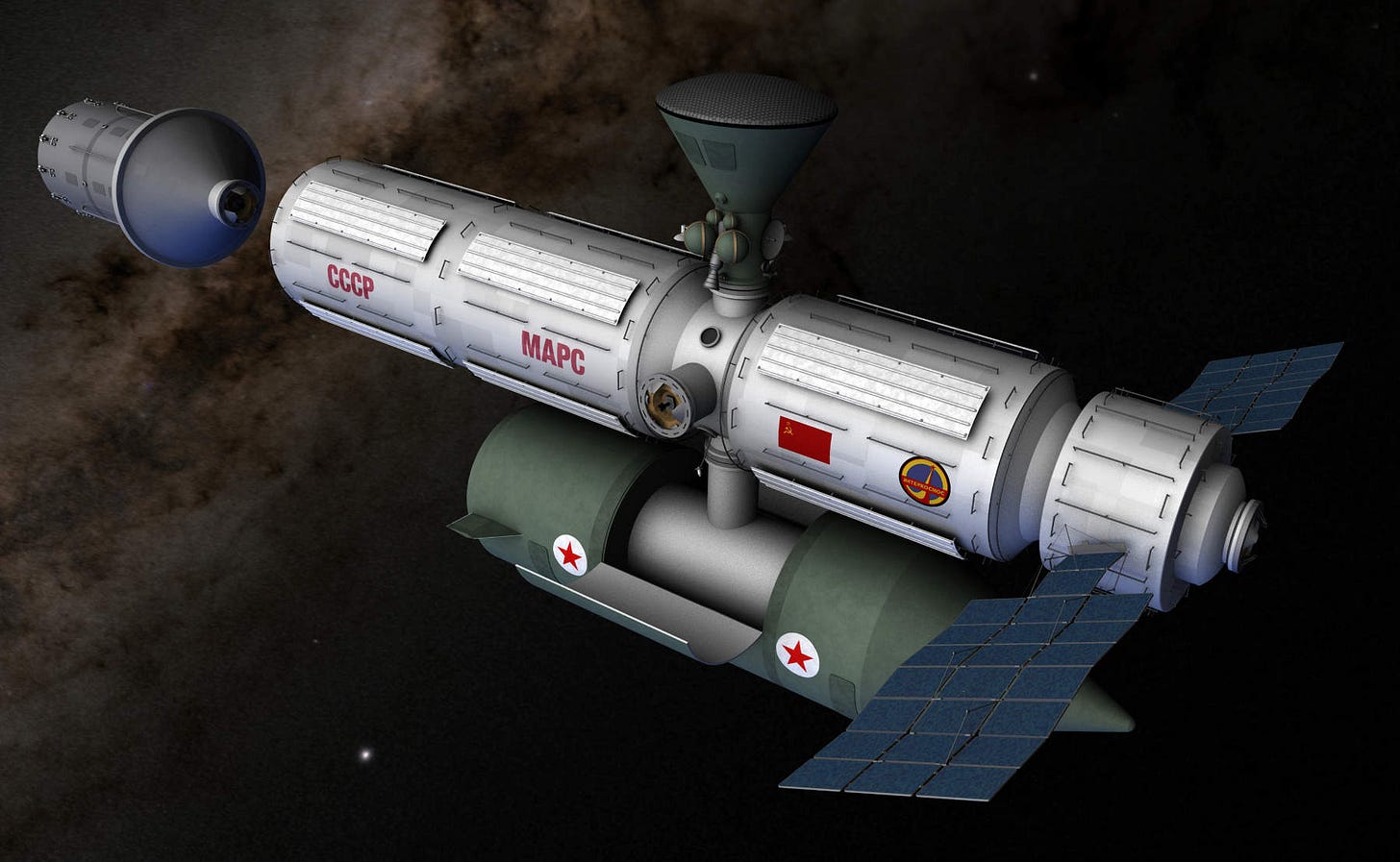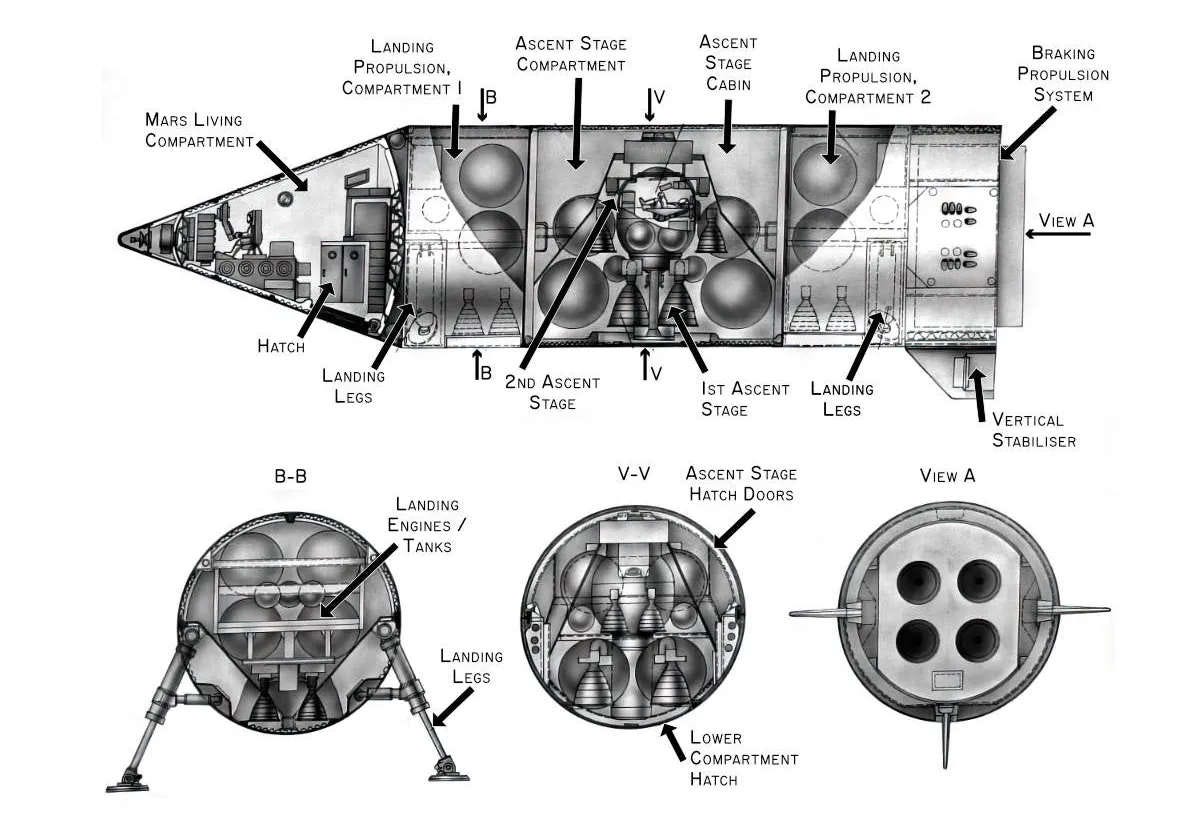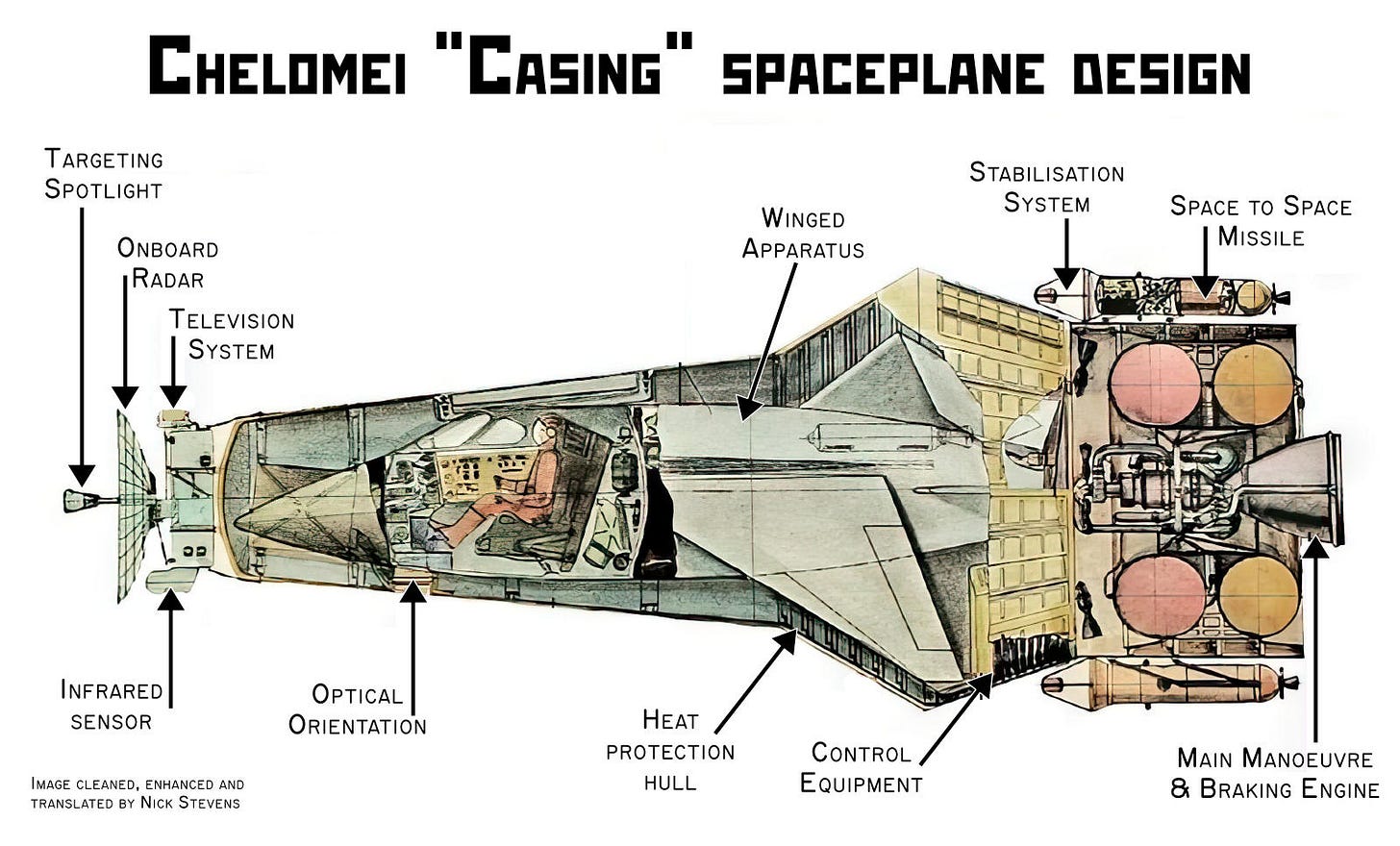Aelita and Mars '87
More Soviet Mars Mission Information
New Aelita information
Those of you who got a copy of the first edition of the book “N1 for the Moon and Mars” will be familiar with the proposal for a crewed nuclear electric Mars mission in 1969.
That section was written by Igor Bezyaev, and he recently sent me a wonderful new diagram, which I have been busy enlarging and translating. It makes a LOT more sense now.
The inspiration for Aelita.
Aelita was named after the 1924 Soviet Science Fiction film, Aelita, Queen of Mars.
If you want more info, there are plenty of details on Wikipedia, including the whole film.
Back to the spacecraft:
This is the model I came up with based on information available at the time of the book.
The black sections are thin radiators, to get rid of the heat from the reactor. And the curved part at the front is an aeroshell, to help the lander get down safely.
Now, one odd thing is the engines - they are way down the end, and pointing sideways relative to the main craft. Surely this would just spin it?!
This is not something random, my main reference is photos of this museum exhibit:
But thanks to Igor, we now know the museum model is wrong. (As a side note, this is not unusual - many Russian museums make basic errors in their displays of spacecraft.)
The new diagram:
Please get in touch if you want to use this image. As usual this version is much lower resolution than the master copy, and heavily compressed.
Notes on the new details:
The engines now make sense! They point towards the rear of the ship.
We can see how the aeroshell of the lander folds back, presumably to fit in the fairings of the N1 launcher.
We have firm dimensions for many of the elements.
Communications antennae are now clearly identified with a backup for the high gain antenna, and more local systems for use at Mars.
The plate between the radiators and the rest of the ship is revealed to be a heat shield.
We now have the position of the Earth return descent module.
The bridge to the 1987 mission.
It is interesting to note which elements were carried forward to the ‘87 crewed nuclear mission. The main propulsion for the 1987 version looks a LOT like two Aelita propulsion sections, end to end.
Is this perhaps the origin of the misplaced engines in the museum Aelita? It is tempting to think that someone in the museum based engine placement on a picture of the ‘87 design, (where they make sense).
The ‘87 design is also, according to the documentation, capable of returning the crew safely to Earth even if one of the reactor / engine assemblies fails. And dropping one of the propulsion modules from the ‘87 design makes the resemblance to Aelita much stronger. Would the engines need to be re-oriented if one module was discarded? I would think so…
Work on models for the 1987 mission
This is progressing nicely, and I think the end is in sight. One element is giving problems though, the connection between the lander module, and the crew section. References directly contradict each other.
Diagrams showing the whole craft always have a tube or tunnel connecting the two, (see above for an example in documentation, and below for my CGI).
But the diagrams of the lander on its own have no such connection! In its place is the ascent stage that returns the cosmonauts from Mars. And even if crew get to that section, the ascent engines are between them and the Mars living compartment.
For now the best I have come up with is to do 2 different versions. Other elements to work on include the lander, which needs more detail, and the Earth return descent module, which lacks windows and thruster ports.
If you missed the previous 2 posts on the Mars ‘87 design, they can be found here:
1987 Nuclear Mars Mission
I was recently rummaging through old folders on my network drive, and found some images I had completely forgotten, covering a 1987 proposal from Glushko for an Energia based mission to Mars. I have no idea where they came from, but I set about restoring, translating, and enlarging them. As usual, click on an image to see a larger version.
And here:
1987 Nuclear Mars Plans, Part 2
Just as I was finishing up the previous post, more information arrived. The article was already close to the recommended maximum length, so I saved it for a second instalment. If you didn’t read Part 1 yet, it would make sense to read that first, you will find it here:
This editions cool link:
Chelomei’s Combat Rocket Planes
(Google translation included in the link)
An excellent and profusely illustrated site with loads of information on the military spaceplane designs by Vladimir Chelomei.
This editions cool visual:
Here’s a link to a 4k resolution video by me, showing the assembly sequence of the Mars 97 craft, with the latest version of my models.
This editions 1 week download:
Another link for you, it will expire 1 week after publication, no extensions will be granted. The Russian space magazine “Novosti Kosmonavtiki”, (Cosmonautics News), was a great resource until it closed down a few years ago. It used to be freely available online, but barriers went up, and it became harder.
Here are all 12 editions, in PDF format, from the year 2000.
Even is you don’t speak Russian there are many good photos and diagrams, and the text is machine readable which makes translation straightforward. Let me know in the comments if you’d like more. Or not.




